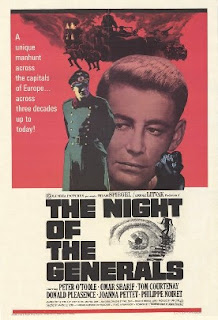Our collective jaws routinely drop when we read about a work of art selling for sums of money that most of us cannot comprehend or even perceive. And yet, there exists an informal club of men and women who are capable of spending such sums.
We won’t waste time wondering whether or not they actually enjoy the art objects on which they lavish huge sums. Their investment redefines what is meant by “priceless.” Is priceless an unattainable sum for the common mortal? Is it a sum that is beyond the reach of a billionaire? Or is it a sum that does not exist?
No matter.
“Transparency”, read less opacity, is the operative principle pertaining to research into the history of art objects even when they fetch sums symbolized by figures that contain eight or nine Arabic numerals.
Let’s take a look at some of these objects for which their proud owners spent at least 60 million dollars.
1. Bassin aux Nympheas, 1919, by Claude Monet sold for 66 million dollars at Christie’s on June 24, 2008.
 |
| Bassin aux nymphéas, 1919, Claude Monet-Source: Christie's |
It belonged initially to the famous Paris art dealing family of Bernheim-Jeune who then sold this dreamy painting to a member of the Durand-Ruel family, another Parisian art dealer, from there to Sam Salz, Norton Simon, an owner in Indiana and then the Millers whose estate sold it off in 2008. This information is accessible through the Christie’s catalogue.
2. The massacre of the Innocents, 1610, by Peter Paul Rubens sold for 76 million dollars in July 2002 through Sotheby’s. Originally misattributed to Jan van den Hoecke, it remained in the same family for close to two centuries. Then it changed owners either before or right after the First World War (1914-1918), fell into the hands of an Austrian family whose patriarch did not like it, thinking it was “ugly” and consigned it to a monastery until the 89-year old heiress of said Austrian family had a change of heart and decided to put it up for sale.
 |
| The Massacre of the Innocents, 1610, Peter Paul Rubens |
3. Le Moulin de la Galette, by Auguste Renoir, sold for 78 million dollars on May 15, 1990 at Christie’s. The smaller of the two versions that Renoir painted, no one knows for certain whether it was painted before or after its more famous larger version which Renoir completed in 1876. It went through the now defunct New York art gallery, Knoedler’s, where John Hay Whitney acquired it in 1929. It remained in the Whitney family until 1990 when it was auctioned and sold to a maverick Japanese businessman, Mr. Saito. He later ran out of money and was forced to sell off his assets including this Renoir painting and one by Van Gogh. Rumor has it that this less ambitious version of “Le Bal du Moulin de la Galette” ended up in a private Swiss collection.
 |
| Le Moulin de la Galette, n. d., Auguste Renoir |
4. Portrait of Dr. Gachet, 1890, by Vincent van Gogh sold for 82 million dollars on May 15, 1990 at Christie’s. Its history carries with it the taint of Nazi cultural policies aimed at works that were deemed objectionable because of their content and execution. This painting by van Gogh changed hands a number of times in the early 20th century, through the Paul Cassirer gallery in Berlin then Galerie Druet in Paris before ending up in the permanent collection of the Städel Museum in Frankfurt. Following the rise to power of the Nazis on January 30, 1933, museum officials there tried their best to shield their “degenerate” works from the prying eyes of the Nazis. Unfortunately, “Dr. Gachet” was a well-known work and van Gogh did not whet the esthetic appetites of the new barbarians clad in brown and black uniforms. Pursuant to official Reich policies, the painting was de-accessioned in 1937 and joined other captive works in the ever-expanding collection of Reichmarschall Hermann Goering. With the help of Joseph Angerer, art historian and art dealer in the pay of Nazi officials, Goering sold “Dr. Gachet” to a German banker, Franz Koenigs, who then allegedly turned around and sold it or relinquished it to Siegfried Kramarsky. The Kramarsky family fled to New York just in time with the van Gogh. The painting was placed on long-term loan to the Metropolitan Museum of Art as of 1984. Thereupon, the Kramasky heirs decided to sell it. Mr. Saito, a Japanese businessman who boasted of possessing a vast fortune, spent a small fortune on the van Gogh, breaking all records to date for a painting by the tortured Dutch master.
 |
| Portrait of Dr. Gachet, 1890, van Gogh |
Then, the painting disappeared from view. It did not help that Mr. Saito went into such exponential debt that, no doubt, “Dr. Gachet” was sold in a private sale. But to whom?
Charles Goldstein, executive director of the New York-based Commission for Art Recovery (CAR), was quoted as saying that, one way or another, the title to the painting is clouded and resale will be difficult. Which would explain why the painting has not resurfaced in the past two decades. Condemned, due to a tainted title, to remain in the global parallel art market of sub rosa transactions. This will not help the Koenigs heiress to recover the painting that she claims was not sold consensually to Kramasky. Or so it would seem.
See the fascinating book by Cynthia Saltzman, “The Portrait of Dr. Gachet: The Story of a Van Gogh Masterpiece, Money, Politics, Collectors, Greed, and Loss” which takes the story of Dr. Gachet up to Mr. Saito.

